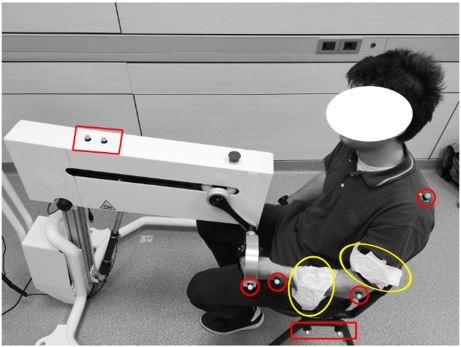International Conference on Mechatronics Technology (ICMT) (10-2019)
C. Amici, M. Ghidoni , F. Ceresoli, F. Ragni, M. Tiboni University of Brescia, Brescia, Italy
P. Gaffurini, L. Bissolotti Domus Salutis Rehabilitation Clinic, Teresa Camplani Foundation
M. Mor, D. Fausti, M. Antonini Polibrixia s.r.l., Brescia, Italy
Abstract:
Objective: Robotic devices are commonly used in rehabilitation as support to physiotherapists in their daily rehabilitation activities, since they can monitor and quantify the subject’s performance and deliver feedback, as well as supply physical therapy. This work aims at performing a preliminary validation of an innovative device, developed within the SIMeRiON funded project, and identifying the optimal experimental setup for the clinical trials, through the analysis of the characteristics of a planar reaching movement impressed to the upper limb of the subject in a sequence of repetitions. Methods: A male healthy subject (26 years old) has been recruited, and asked to perform an imposed reaching movement with his left arm, during three consecutive sessions. The subject was instrumented with two triaxial accelerometers, placed in two possible configurations, and eight passive optical markers evaluated with a two fixed cameras optoelectronic system. To identify and compare different motion cycles, the collected data have been analyzed in MATLAB and R environment. Results: Data emphasize a high repeatability of the imposed movement, especially at human-machine interface, and suggest that accelerometers data could be integrated with different sensors (e.g. sEMG sensors).



